The Instagram conundrum: should you stay or should you go?
Is it time to quit Instagram, or do you just need to reset your expectations with social media?
Instagram seems to be having a moment in recent years. And not in a flattering way. There’s a rising tide of people who are either quitting or considering quitting Instagram, or are drastically cutting back on the time and energy they spend on the platform. And while an Instagram backlash isn’t new — remember the Instagram bashing when they removed the chronological feed and then again when they introduced Reels? — this time, it’s because of declining reach. This is a much more significant issue, especially if you’re running a small business. I think it also impacts those of us who are simply looking to share our work and connect with other artists and creatives.
I mean, if hardly anyone is seeing your posts, what is the point of remaining on the platform and trying desperately to beat the algorithm? And why do so many of us have a love-hate relationship with Instagram anyway?
I think, to really answer that question, we need to take a little walk down memory lane. I’m sharing my Instagram journey, from the time when I started using it back in 2011 to how I’m using it today.
In seeing my journey and the evolution of my grid — and my sharing — I think you’ll see your own journey with this app reflected back at you. And maybe also the reason why we all fell in love with Instagram, and why we are now so disenchanted with it.
A walk down memory lane
Oh, how I loved street photography and vintage, scratched looking photographs!
I signed up for Instagram back in 2011, when it was an iPhone only photo sharing app. I still remember the novelty of being able to document my love for street photography, cat photographs, book stacks, coffee mugs, and tarot cards, and the propensity towards certain filters {anyone remember the Gingham filter? That used to be one of my favorites!}
Looking back at those photographs, I can see that I used the app more like a fun playground; a visual diary. I wasn’t on there everyday, scrolling away hours of my life. I wasn’t concerned with likes or even with growing a following.
Slowly, my feed started to change. When I discovered my love for art, when it started to become a ‘thing’, I really wanted to share it. But I didn’t want to post it on Facebook, and I wasn’t yet confident about putting it up on my blog — I wanted to keep it away from people who know me in ‘real life’. Somehow, back in the day {around 2014/2015}, it would have been more devastating if someone I knew in real life passed a snide remark on my beginning attempts at art; I didn’t really think random strangers would be cruel — those were somewhat politer times, even on the internet!
So of course, I started sharing my paintings on Instagram. It was all a glorious mix — art, travel, books, slice of life.
Scrolling through my feed, I can see all the different phases I went through with Instagram — from using it as a visual diary to documenting my art journey, and then slowly realizing that the Instagram was undergoing a change. First, when the app became available on Android — suddenly, its popularity skyrocketed; then, when bloggers found it — we were suddenly all sharing our blogs, hosting Instagram challenges, and making some delightful connections on the platform.
All of that changed, yet again, with the rise of influencer culture and the explosion of online teaching, which led to an emphasis on a curated grid and niching down the focus of our Instagram accounts, all so we could run our ‘business’ on the platform — whether that was selling something or simply sharing our blogs and growing our email lists. Somewhere along the way Facebook acquired Instagram, and slowly, it became the platform that we all love to hate today.
The current state of the ‘Gram
As I was scrolling through the 1,480 photographs I’ve posted on Instagram over the years, I realized that I actually loved what I was doing there back in the day, before an aesthetic, niched down grid became a thing.
Here’s my grid from 2018, before I bought into the message to niche down and curate my feed.
From the next year, the tarot posts became few and far between, and eventually, I dropped them altogether, choosing to focus purely on art. This is a more recent snapshot of what my Instagram grid looks like today.
Dear reader, tell me this: does the grid from 2018 confuse you, make you wonder what the hell this Instagram account is about and put you off, or would you find it interesting enough to scroll through the feed and maybe follow this account? In other words, would you prefer to follow a niche Instagram account or one that has more personality?
Me, I’d choose the one with more personality.
As you can see from my Instagram journey above, many of us started using Instagram for the sharing, the connection, maybe even as a way to document our days and our lives. There was a phase when many folks were microblogging on Instagram. Hashtags were an excellent way to connect with people from around the world who shared our interests.
Slowly, I think a lot of us started changing the way we viewed Instagram — we wanted more than just the connection, we wanted to build businesses or maybe get more readers over to our blogs or websites. And there was a time when it was relatively easy to reach followers and new accounts.
Until suddenly, it wasn’t. The dreaded algorithm became a thing to crack. Reels took over and forced us all to become videographers if we had a hope in hell to grow. Cut to 2023, and reach started to plummet, which meant that less than 2% of our followers actually saw our posts.
Think about it: How many accounts do you follow, and how many of their posts do you see in your feed?
Chances are, it’s a limited handful of accounts that regularly appear in your Instagram feed, with many more posts appearing from Suggested Accounts and advertisements. All of this has played havoc with our experience on Instagram.
The future of Instagram: Should you stay or should you go?
I think it’s important to determine why you are on Instagram in the first place, and what you hope to achieve by being on the platform.
As a business owner: If you’re on Instagram to build or run your business, you’re probably feeling the effects of diminishing reach much more acutely. And no, you’re not imagining it. According to Social Insider, there’s been an 18% year-on-year decrease in reach on Instagram in 2024. At the beginning of 2023, Instagram had an average reach rate of 9.34%, but that’s fallen over the course of the year, coming in at 7.60% at the start of 2024.
You can choose to play the Instagram game — create more valuable/engaging content, whatever that means! — or focus on building up your e-mail list instead. And no, not everyone from Instagram is going to sign up for your newsletter, so you don’t need to be on Instagram to grow a newsletter list. I recently read somewhere that just about 1% of your Instagram followers will sign up for your newsletter. Pretty depressing, right?
Your energies are probably better spent elsewhere. On your own website, collaborating with others in your niche, or maybe even on Pinterest. And definitely build your e-mail list!
As an author: If you have dreams of publishing a book, chances are that you do need to have an Instagram account — and a big one at that. Yes, yes — I know what you’re thinking. There are some big name authors who have quit Instagram and others who maybe don’t have an Instagram account. BUT, if you’re new to the publishing industry, the chances of your book getting picked up by a publishers are slim if you don’t have a sizeable Instagram {or other social media} account. As
put it so succinctly:As an artist or creative: This is a bit of a tricky one! I think a lot of artists and creatives loved Instagram because it was an excellent way to share their work and connect with fellow makers. If that’s all that you want to do, and if Instagram still works for you, that’s great. By all means, keep on doing what you’re doing! But if it isn’t working for you anymore, if you’re feeling weary by all the changes, look for different ways to share your art and to connect with other artists.
Not everyone can make offline connections, I totally get that and I’m in the same boat. You could look for Facebook groups — there are a few that are still very active within the art journaling and slow stitching space, and I’m sure there are active groups in other spaces too. There are also paid communities, if that is something that you have the budget and the inclination for. But again, not everyone does. So maybe you can do what I did — create a Substack account and start sharing your art, and your heart! Don’t know what Substack is? Take a look at this post.
Writing here, having this space where I show up once a week to share my art, my process, and my thoughts on this creative journey feels truly fulfilling. Hearing back from you in the comments and via email feels delightful! And while I am not quitting Instagram just yet, the time I spend there has decreased significantly.
Another way to look at Instagram as an artist is this:
“The artist does not simply hold a mirror to society. If the world now is greedy, the artist must be generous. If there is war and hate, he must be peaceful and loving. If the world is insane, he must offer sanity, and if the world is becoming a void, he must fill it with his soul.” - Russell Chatham
Maybe instead of being beholden to likes and followers and reach, we can simply play with Instagram. Go back to sharing what feels good to share. Snippets of your art and your life and what you’re reading and loving. Let it be a garden of wild flowers instead of a carefully curated and pruned formal garden. Maybe when we let go of expectations and returns, we can recapture a bit of the initial magic of Instagram.
Or maybe, it’s too late for that.
The future of Instagram — and other social media platforms
So what is the conclusion that you’ve drawn with regards to Instagram? Do you think it’s a place that you want to continue to invest it? Play with? Or ignore altogether?
Just like in life, there are no simple or definitive answers. There’s only what works for you. My hope with this rather long post is that I’ve given you some ways to think about Instagram, about what you’re doing there and why, what you should pay attention to and what you should probably ignore.
But before I wrap up, I want to share a few snippets from Ted Gioia’s brilliant article, The State of the Culture 2024:
The fastest growing sector of the culture economy is distraction. Or call it scrolling or swiping or wasting time or whatever you want. But it’s not art or entertainment, just ceaseless activity.
The key is that each stimulus only lasts a few seconds, and must be repeated.
It’s a huge business, and will soon be larger than arts and entertainment combined. Everything is getting turned into TikTok—an aptly named platform for a business based on stimuli that must be repeated after only a few ticks of the clock.
He goes on to write:
The tech platforms aren’t like the Medici in Florence, or those other rich patrons of the arts. They don’t want to find the next Michelangelo or Mozart. They want to create a world of junkies—because they will be the dealers. Addiction is the goal.
If you aren’t in a position to quit Instagram or other social media, maybe you’ll find it helpful to spend some time unplugged from your devices . That means no podcasts, no playlists, no YouTube — just notice the view outside your window, play with your children and/or pets {no photographs! Just 100% attention}, give yourself some time to just sit quietly and listen to your own thoughts.
Try it for a few hours every week — and if you’re even braver, for an entire day. Can you imagine that? An entire day of being offline — be present for your loved ones, your pets, your friends; journal, read, paint, cook, garden, create. Now, isn’t that the dream life?
And maybe when you do log back in to Instagram, it will be with a fresher perspective.
Let’s chat!
I love chatting with you in the comments or via e-mail. Here are a few questions to help us get the conversation rolling. {Oh look, they also make great journal prompts!}
What’s your primary reason for using Instagram, and is it working for you?
What’s your relationship with Instagram? Do you feel like it’s sucking your soul? Why?
If you feel like quitting Instagram, what would make the decision easier for you?
If you have a friend who is struggling with Instagram, why not share this post with them? If you’re on the Substack app, consider restacking this post to Notes.
P.S. Will you stay on Instagram, or do you think it’s time to say bye? Tell me in the comments, or simply reply to this email. You can also hit the like button or restack to Substack Notes to let me know you enjoyed this post. xo





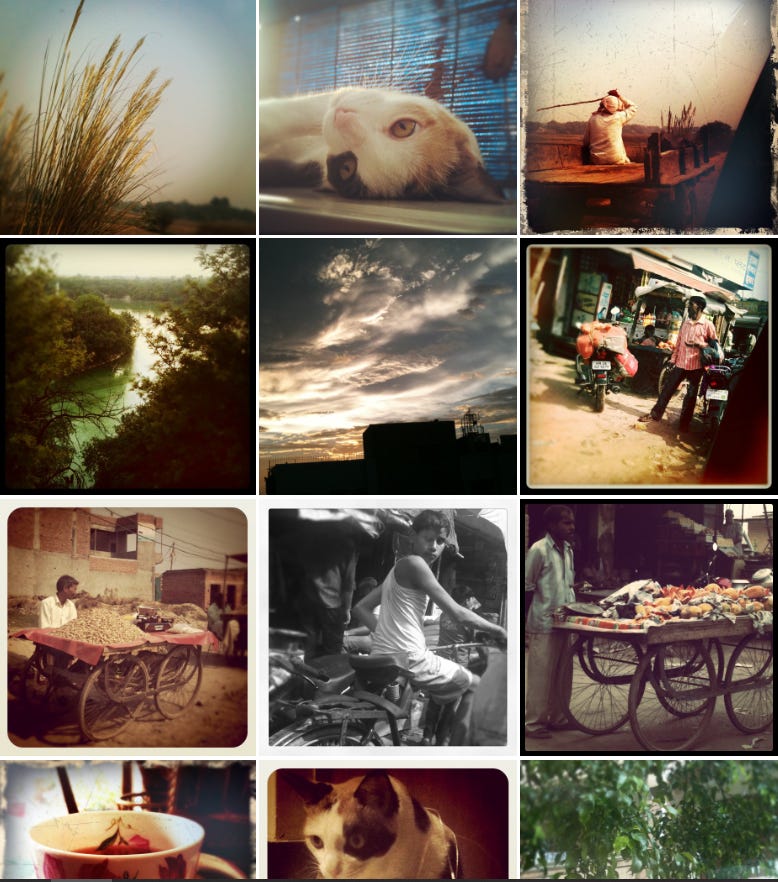
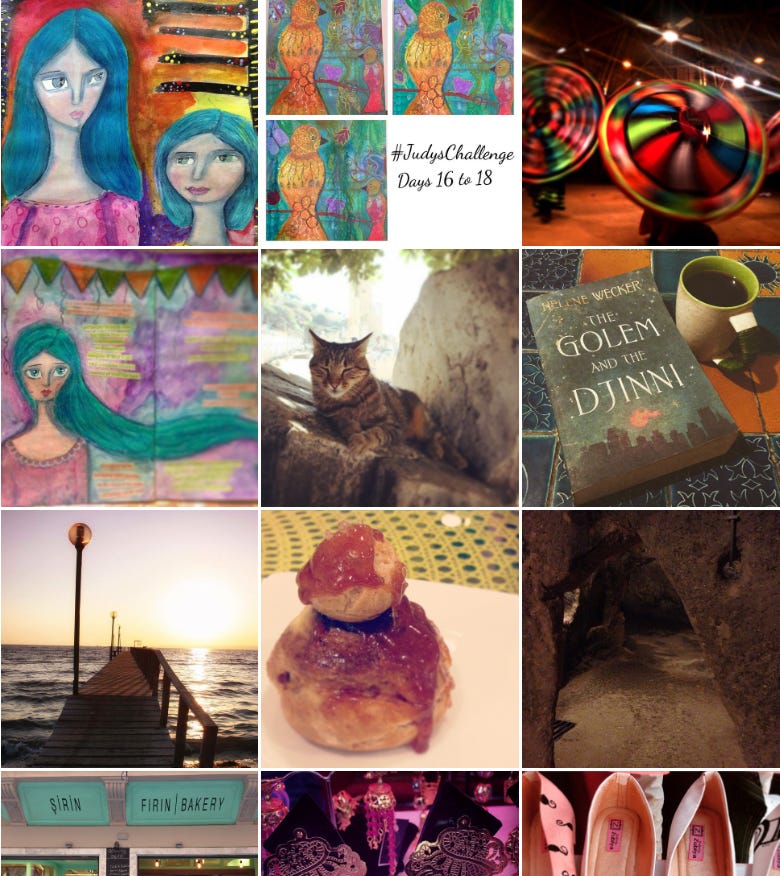
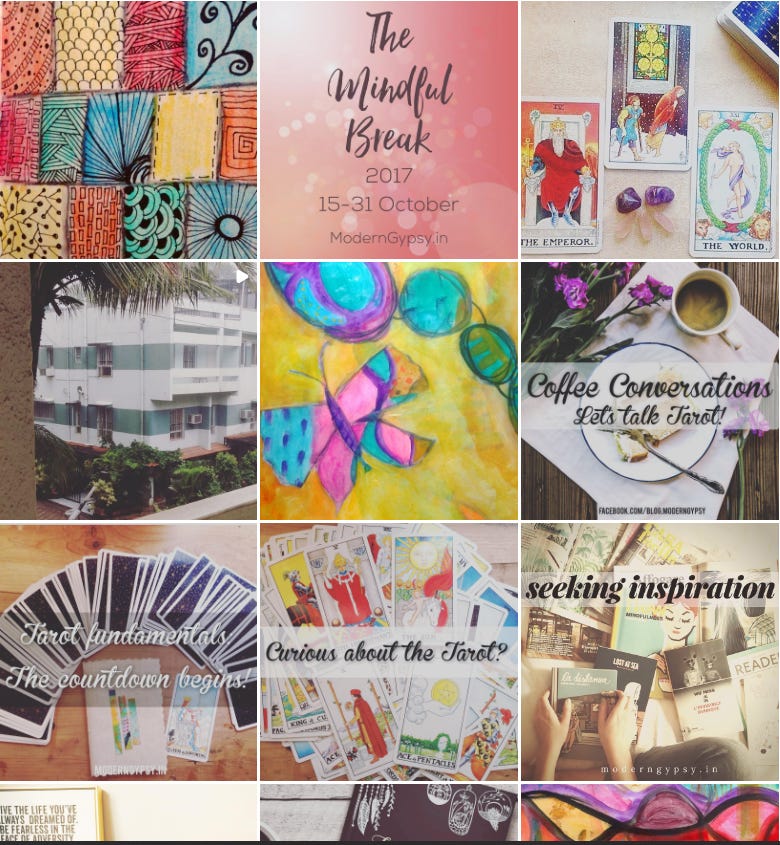
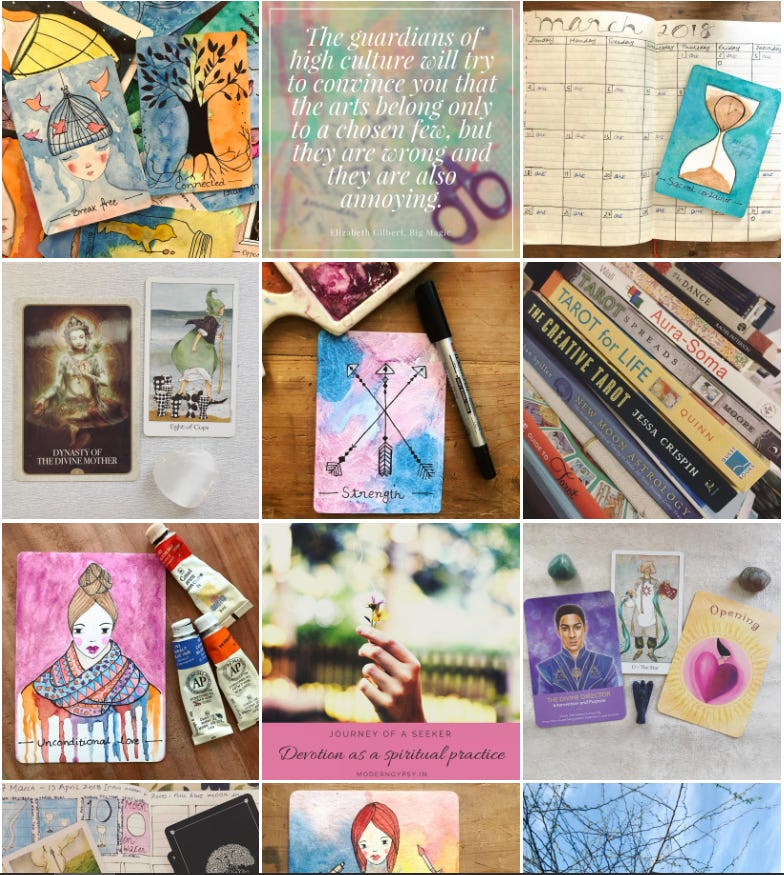
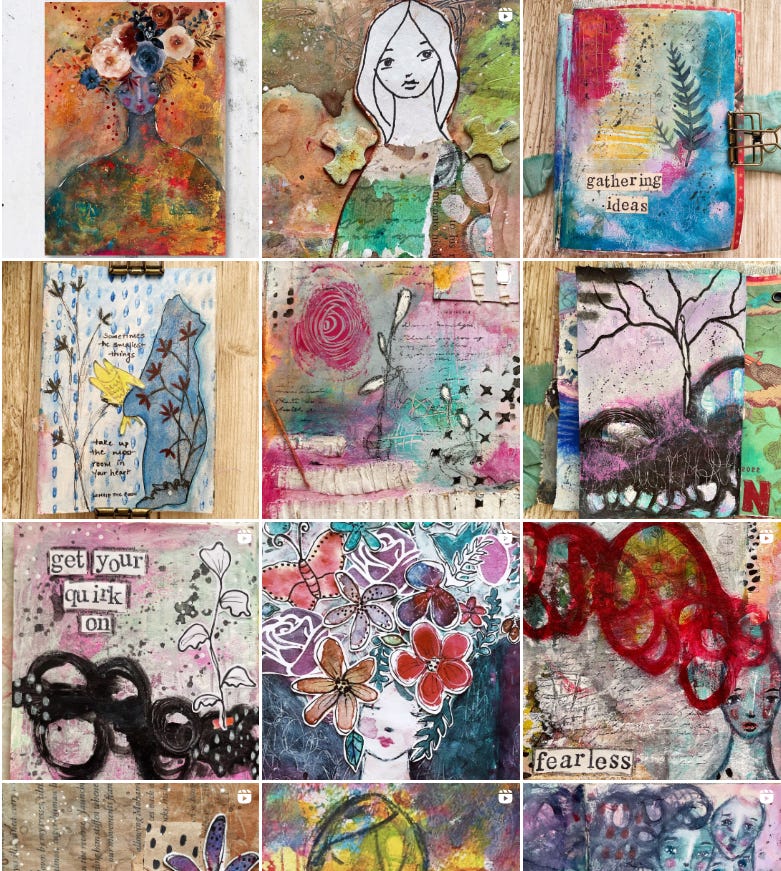
I’m wrestling with this currently. I left Instagram (and a sizable audience) in 2018 and went back last year. It feels like sharing with a void, but I have decided to have fun there instead. I’m going to use it to chronicle my photography and keep up with accounts that inspire me.
The promise of IG (and social media) is infinite audience. But in these distracted times, infinity does not always count for very much. I think the most important thing for creatives is to cultivate deep connection and authentic communication (more than half a distracted second at least!) with a small audience before we try to go bigger. Like a building, we need firm foundations, brick by brick.